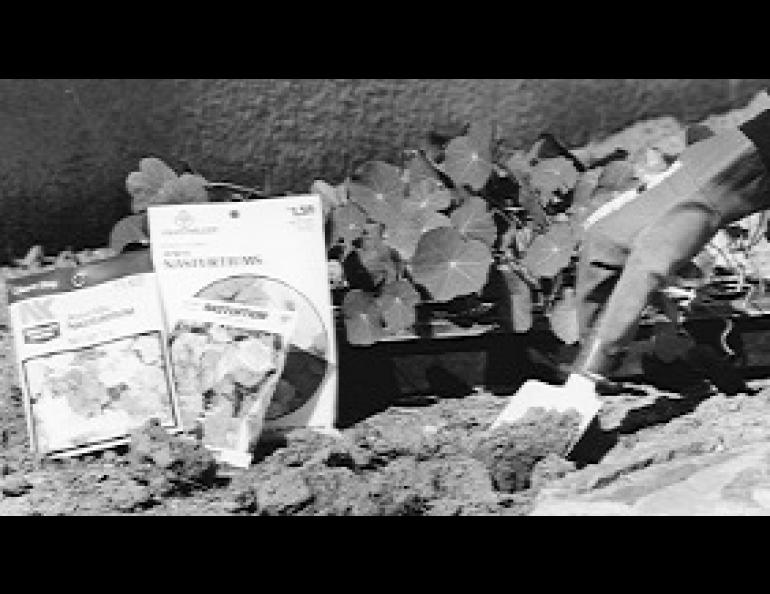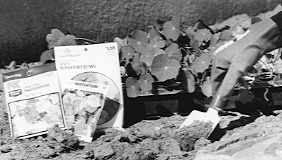
Blooming Thermometers
Would you like to participate in an experiment I've had in mind for years? Well, buy yourself a packet of nasturtium seed and read on!
As I've mentioned a couple of times recently, the last killing frost of spring (and the first killing frost of fall) are generally radiation frosts -- which among other things means that whether a plant is frozen can be due to very local factors. A plant next to a building will survive while one out in the open will blacken; a flower bed in town will be untouched while one in the country is frozen solid.
I have thought for years that one way of mapping cold spots and heat islands would be to record the first date of frost in the fall at a large number of places and plot the results on a map. Doing this with thermometers presents some problems. For one thing, thermometer temperatures don't really tell if plants are going to freeze; for another, all of the thermometers would have to be carefully calibrated against each other, read at the same time (just before sunrise), and similarly exposed.
Plants of the same variety, however, will freeze at nearly the same leaf temperature, at least if they are similarly watered. Nasturtiums freeze readily, and are widely grown in Alaska. Why not record the dates that nasturtiums freeze in gardens all over the state?
If you want to participate, plant some nasturtiums in the most open, level spot you have available, and keep them well watered. (To extend the experiment for your own use, you might want to try planting more seeds in less open spots, such as next to a house or under a tree, or in a raised or sunken area, and compare their freezing dates with those of the test flowers. This will give you a rough microclimate plot of your own plot.) Keep them well watered, and when the nighttime temperatures start to drop, do not cover or protect them in any way. Record the date that the first frost damage appears (generally the top leaves will shrivel and/or blacken) and the date that the plants are killed by frost. Send the information to me at the Geophysical Institute, UAF, Fairbanks, 99775-0800.
Include a description of the area in which your nasturtiums were planted and the exact location -- on a topographical map if possible -- of your lot. In the description, I need to know the distance and approximate height of the closest trees and buildings, the slope of the ground, and whether the nasturtium patch was higher or lower than its surroundings. Sometime next fall I'll map the data, and probably publish the maps next year in spring, when it's time to think of gardens again. Happy nasturtium growing!





